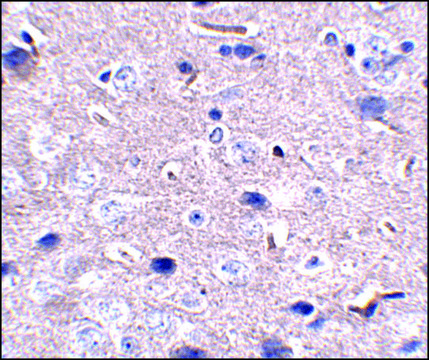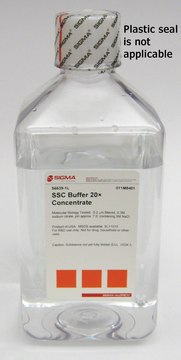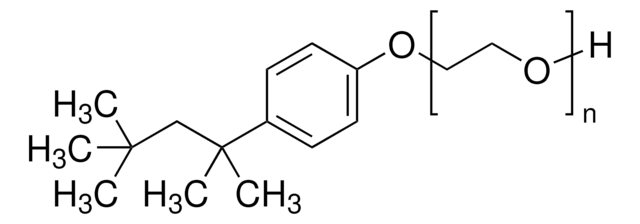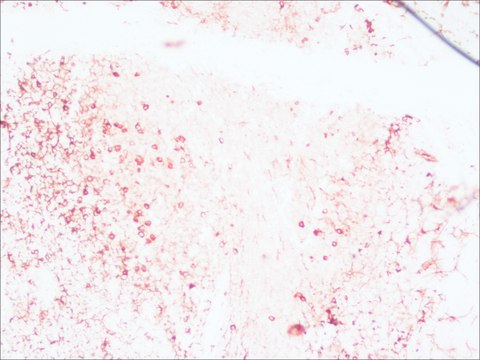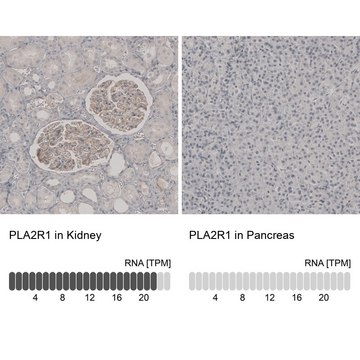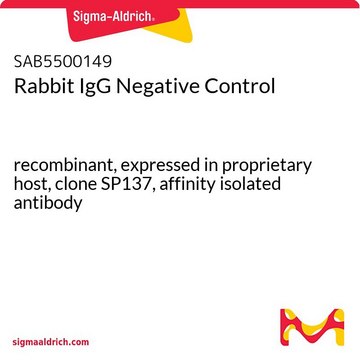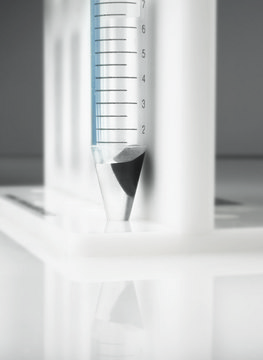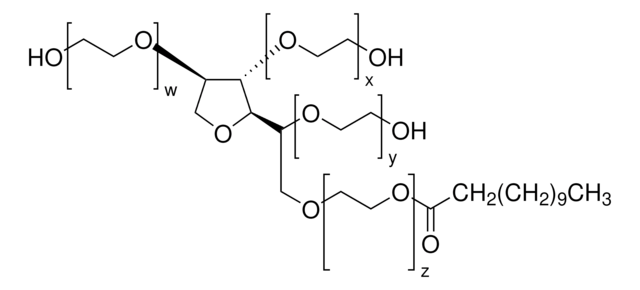MABF925
Anti-FcγRII (human) Antibody, clone AT10
clone AT10, from mouse
别名:
CD32CDw32, Fc-gamma RII-a, Fc-gamma RII-b, Fc-gamma RII-c, Fc-gamma-RIIa, Fc-gamma-RIIb, Fc-gamma-RIIc, FcRII-a, FcRII-b, FcRII-c, IgG Fc receptor II-a, IgG Fc receptor II-b, IgG Fc receptor II-c, Low affinity immunoglobulin gamma Fc region receptor II-a
登录查看公司和协议定价
所有图片(3)
About This Item
UNSPSC代码:
12352203
eCl@ss:
32160702
NACRES:
NA.41
推荐产品
生物来源
mouse
质量水平
抗体形式
purified immunoglobulin
抗体产品类型
primary antibodies
克隆
AT10, monoclonal
种属反应性
human
技术
flow cytometry: suitable
同位素/亚型
IgG1κ
运输
dry ice
靶向翻译后修饰
unmodified
基因信息
human ... FCGR2A(2212) , FCGR2B(2213)
一般描述
FcγRI/CD64, FcγRII/CD32, FcγRIII/CD16, and FcγRIV/CD16-2 represent the four known classes of IgG Fc receptors (FcγRs). FcγRII, FcγRIII, and FcγRIV are low-affinity receptors for monomeric IgG, whereas FcγRI is the only high-affinity FcγR. FcγRs play important roles in inflammatory cell activation, clearance, presentation of Ag, and maintenance of IgG homeostasis. In addition to binding immune complex (IC), FcγRs have been shown to bind non-IgG ligands. For example, FcγRII is shown to bind oxLDL, while FcγRIII binding to an E. coli component is reported to negatively regulate the function of macrophage receptor with collagenous structure (MARCO). FcyRII activation is also reported to transduce a negative regulatory signal against CD38 crosslinking-induced proliferation of resting mature B cells. Low affinity immunoglobulin gamma Fc region receptor II-a/b/c (IgG Fc receptor II-a/-b/-c, CDw32, Fc-gamma RII-a/-b/-c, Fc-gamma-RIIa/b/c, FcRII-a/-b/-c, CD32) are encoded by the FCGR2A/B/C (CD32, FCG2, IGFR2) genes in human (UniProt P12318, P31994, P31995; Gene ID 2212, 2213, 9103). The FcγRIIs encoded by the three genes are highly conserved in their extracellular portion, with significant variation in the transmembrane and intracellular regions. All three types of transcripts alternative splicing to generate additional isoforms.
特异性
Clone AT10 targets the extracellular domain of human FcγRII and blocks its Fc binding activity. Expected to bind all three human FCGR2 genes-encoded FcγRII spliced isoforms reported by UniProt (P12318, P31994 & P31995).
免疫原
Epitope: Extracellular domain.
Human erythroleukaemic K562 cells.
应用
Anti-FcγRII (human) Antibody, clone AT10 is an antibody against FcγRII for use in Flow Cytometry.
Flow Cytometry Analysis: 25 µg/mL from a representative lot was conjugated with FITC and detected FcγRII surface expression among the monocytes, but not the lymphocytes population of human peripheral blood mononuclear cells (PBMCs) by flow cytometry (Courtesy of Professor Martin J. Glennie, University of Southampton, UK).
Flow Cytometry Analysis: A representative lot was conjugated with Phycoerythrin (PE) and immunostained the surface of human Burkitt′s lymphoma Ramos cells transfected with FcγRIIB, but not untransfected Ramos cells (Courtesy of Professor Martin J. Glennie, University of Southampton, UK).
Flow Cytometry Analysis: Clone AT10 hybridoma culture supernatant was employed to detect FcγRII-positive peripheral blood lymphocytes (PBLs) by flow cytometry (Greenman, J., et al. (1991). Mol. Immunol. 28(11):1243-1254).
Immunoprecipitation Analysis: A representative lot immunoprecipitated FcγRII from human K562 erythroleukemic cells (Greenman, J., et al. (1991). Mol. Immunol. 28(11):1243-1254).
Affinity Binding Assay: Affinity binding study using the Fab′ fragment of clone AT10 showed an equilibrium binding constant (Ka) of 5.3 x 10^8/M and a total of 1.5 x 10^5 binding sites per K562 cell (Greenman, J., et al. (1991). Mol. Immunol. 28(11):1243-1254).
Neutralization Analysis: The F(ab′)2 fragment of clone AT10 blocked FcγRII-dependent B-cell activation by a chimeric anti-CD40 mAb with human IgG1 Fc (ChiLob 7/4 h1) induced in the presence of FcγRII-overexpressing 293F as the crosslinking cells (White, A.L., et al. (2015). Cancer Cell 27(1):138–148).
Neutralization Analysis: Both the Fab′ and F(ab′)2 fragments of clone AT10, but not control IgG1 or control F(ab′)2, blocked K562 cells from rosetting with rabbit IgG-coated chick red blood cells (CRBCs) (Greenman, J., et al. (1991). Mol. Immunol. 28(11):1243-1254).
Neutralization Analysis: The F(ab′)2 fragment of clone AT10 blocked the lysis of chick red blood cells (CRBCs) by effector cells via redirected cellular cytotoxicity (RCC; antibody-dependent cell-mediated cytolysis; ADCC) mediated by an anti-CRBC monoclonal antibody (E11C12) (Greenman, J., et al. (1991). Mol. Immunol. 28(11):1243-1254).
Flow Cytometry Analysis: A representative lot was conjugated with Phycoerythrin (PE) and immunostained the surface of human Burkitt′s lymphoma Ramos cells transfected with FcγRIIB, but not untransfected Ramos cells (Courtesy of Professor Martin J. Glennie, University of Southampton, UK).
Flow Cytometry Analysis: Clone AT10 hybridoma culture supernatant was employed to detect FcγRII-positive peripheral blood lymphocytes (PBLs) by flow cytometry (Greenman, J., et al. (1991). Mol. Immunol. 28(11):1243-1254).
Immunoprecipitation Analysis: A representative lot immunoprecipitated FcγRII from human K562 erythroleukemic cells (Greenman, J., et al. (1991). Mol. Immunol. 28(11):1243-1254).
Affinity Binding Assay: Affinity binding study using the Fab′ fragment of clone AT10 showed an equilibrium binding constant (Ka) of 5.3 x 10^8/M and a total of 1.5 x 10^5 binding sites per K562 cell (Greenman, J., et al. (1991). Mol. Immunol. 28(11):1243-1254).
Neutralization Analysis: The F(ab′)2 fragment of clone AT10 blocked FcγRII-dependent B-cell activation by a chimeric anti-CD40 mAb with human IgG1 Fc (ChiLob 7/4 h1) induced in the presence of FcγRII-overexpressing 293F as the crosslinking cells (White, A.L., et al. (2015). Cancer Cell 27(1):138–148).
Neutralization Analysis: Both the Fab′ and F(ab′)2 fragments of clone AT10, but not control IgG1 or control F(ab′)2, blocked K562 cells from rosetting with rabbit IgG-coated chick red blood cells (CRBCs) (Greenman, J., et al. (1991). Mol. Immunol. 28(11):1243-1254).
Neutralization Analysis: The F(ab′)2 fragment of clone AT10 blocked the lysis of chick red blood cells (CRBCs) by effector cells via redirected cellular cytotoxicity (RCC; antibody-dependent cell-mediated cytolysis; ADCC) mediated by an anti-CRBC monoclonal antibody (E11C12) (Greenman, J., et al. (1991). Mol. Immunol. 28(11):1243-1254).
Research Category
Inflammation & Immunology
Inflammation & Immunology
Research Sub Category
Immunoglobulins & Immunology
Immunoglobulins & Immunology
质量
Evaluated by Flow Cytometry analysis of human PBMCs.
Flow Cytometry Analysis: 1.0 µg of this antibody detected FcγRII in 1x10E6 human peripheral blood mononuclear cells (PBMCs).
Flow Cytometry Analysis: 1.0 µg of this antibody detected FcγRII in 1x10E6 human peripheral blood mononuclear cells (PBMCs).
目标描述
31.30 kDa (FcγRIIA), 29.49 kDa (FcγRIIB1), 27.39 kDa (FcγRIIB2), 29.22 kDa (FcγRIIB3), 31.03 kDa (FcγRIIC1), 25.69 kDa (FcγRIIC2), 24.82 kDa (FcγRIIC3), 21.35 kDa (FcγRIIC4) calculated. ~42 kDa (glycosylated) and ~36 kDa (PNGase F treated) reported (Greenman, J., et al. (1991). Mol. Immunol. 28(11):1243-1254).
外形
Protein G Purified
Format: Purified
Purified mouse monoclonal IgG1κ antibody in PBS without preservatives.
储存及稳定性
Stable for 1 year at -20°C from date of receipt.
Handling Recommendations: Upon receipt and prior to removing the cap, centrifuge the vial and gently mix the solution. Aliquot into microcentrifuge tubes and store at -20°C. Avoid repeated freeze/thaw cycles, which may damage IgG and affect product performance.
Handling Recommendations: Upon receipt and prior to removing the cap, centrifuge the vial and gently mix the solution. Aliquot into microcentrifuge tubes and store at -20°C. Avoid repeated freeze/thaw cycles, which may damage IgG and affect product performance.
其他说明
Concentration: Please refer to lot specific datasheet.
免责声明
Unless otherwise stated in our catalog or other company documentation accompanying the product(s), our products are intended for research use only and are not to be used for any other purpose, which includes but is not limited to, unauthorized commercial uses, in vitro diagnostic uses, ex vivo or in vivo therapeutic uses or any type of consumption or application to humans or animals.
未找到合适的产品?
试试我们的产品选型工具.
储存分类代码
12 - Non Combustible Liquids
WGK
WGK 2
闪点(°F)
Not applicable
闪点(°C)
Not applicable
Valter R M Lombardi et al.
Experimental and therapeutic medicine, 15(3), 2547-2556 (2018-02-23)
Novel effective chemopreventive agents against cancer are required to improve current therapeutic rates. The aim of the present study was to investigate the anti-carcinogenesis effect of AntiGan, an extract obtained from the European conger eel, Conger conger, in vitro (human
Andrea Doni et al.
Nature communications, 12(1), 3739-3739 (2021-06-20)
Serum amyloid P component (SAP, also known as Pentraxin 2; APCS gene) is a component of the humoral arm of innate immunity involved in resistance to bacterial infection and regulation of tissue remodeling. Here we investigate the role of SAP
Aurore Morello et al.
PloS one, 8(8), e73375-e73375 (2013-08-31)
Membrane FasL is the natural trigger of Fas-mediated apoptosis. A soluble homotrimeric counterpart (sFasL) also exists which is very weakly active, and needs oligomerization beyond its trimeric state to induce apoptosis. We recently generated a soluble FasL chimera by fusing
我们的科学家团队拥有各种研究领域经验,包括生命科学、材料科学、化学合成、色谱、分析及许多其他领域.
联系技术服务部门